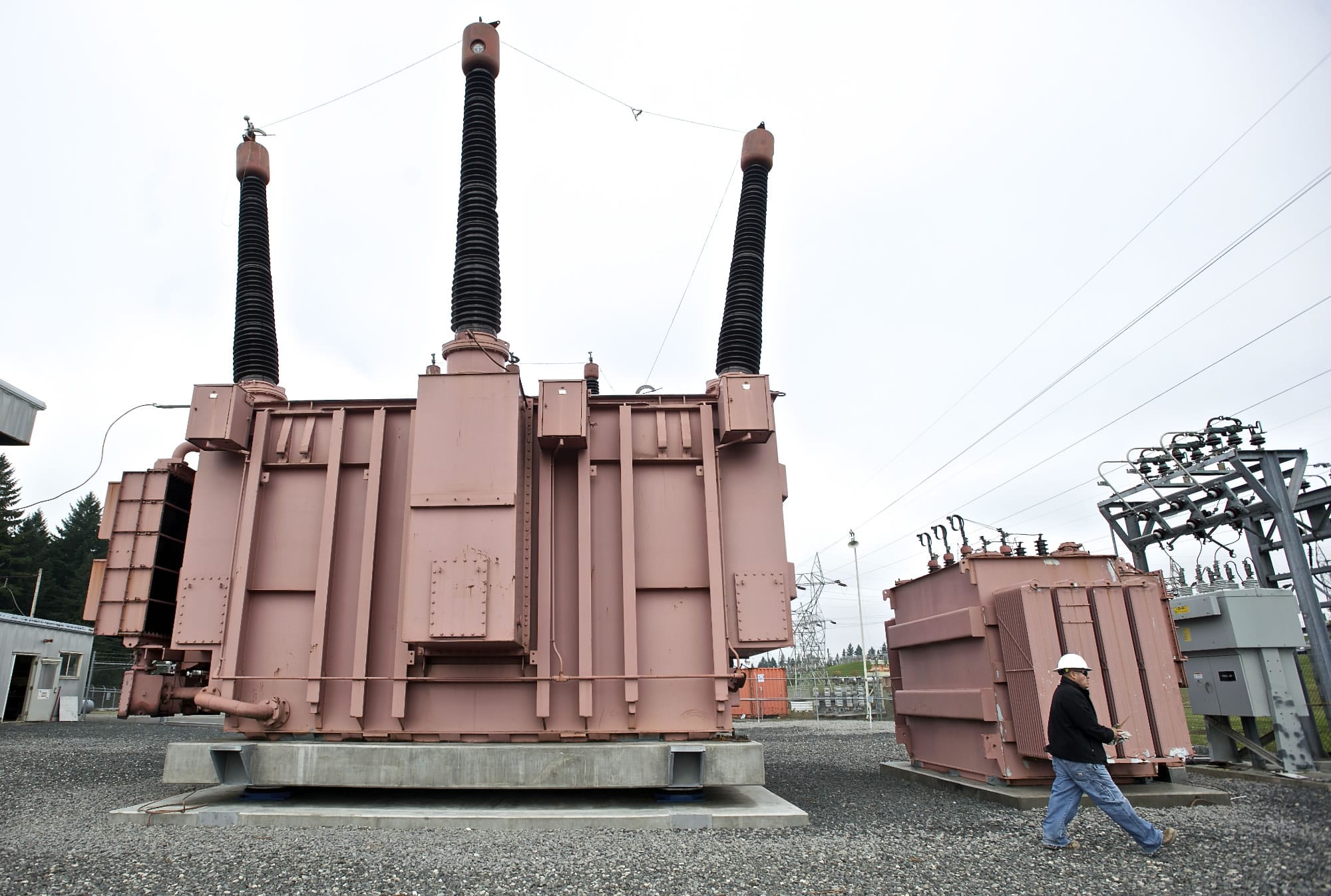Bonneville Power Administration researchers hope they’ve found a new way to fortify the regional power grid against a major earthquake.
A first-of-its-kind transformer upgrade, installed last month at Vancouver’s Ross Complex, is still something of an unproven commodity for now. That’s because there’s only one way to get a full-scale test of the technology.
An earthquake.
“We may never see it perform — hopefully,” said Leon Kempner, a BPA structural engineer and project manager.
Workers fitted the transformer with a new support system known as base isolation technology. The upgrade installed four shock-absorbing devices, sandwiched between two concrete pads, underneath the unit. To put them in place, crews had to jack up the 400,000-pound transformer before re-fastening it to its new supports.
For the study, BPA picked a transformer that’s functional, but used for testing. It’s the first operational transformer in the country to be fitted with base isolation technology, Kempner said, and one of only a few in the world. The idea is to minimize damage and improve the region’s ability to recover from a major seismic event.
Officials have focused their research on transformers because they are among the most essential components of any electrical system, Kempner said. The structures are what move power from one voltage to another as it makes its way through large transmission lines to local utilities and customers.
“We cannot move power without a transformer,” Kempner said. “We lose transformers, we’re out of business.”
The base isolation devices have shown promise in model testing, said BPA construction manager Jonathan Ayers. But there’s no practical, controlled way to shake a fitted transformer that weighs almost a half-million pounds. Even if there were, doing so would mean risking damage to a multimillion-dollar structure that’s difficult to replace, he said.
Monitoring activity
BPA researchers do, however, plan to fit the Ross Complex transformer with monitoring instruments. Even a small earthquake — not the Cascadia Subduction Zone monster that scientists believe is due to hit the Northwest — could go a long way in determining the technology’s viability, Kempner said.
The work is part of a multiyear research project in collaboration with the University at Buffalo, N.Y., and other partners. The $2 million study comes as state and local authorities continue to promote earthquake preparedness. On Thursday morning, thousands of people across the state observed a coordinated earthquake drill in the “Great Washington ShakeOut.”
BPA’s base isolation study is not its first foray into seismic upgrades — far from it. Since the 1990s, the federal power marketing agency has anchored the foundations of nearly all of its 400 or so transformers west of the Cascade Mountains, Kempner said. That includes the other transformers at Ross Complex in Vancouver.
For now, the test transformer with base isolation supports is in “elite company,” said BPA spokesman Joel Scruggs. But if the technology proves effective, it could be implemented elsewhere in the system. The cost would be relatively cheap, as transformers could potentially be adapted for less than $100,000 each, Kempner said.
That’s not likely to happen quickly. Before power managers begin fitting crucial electrical infrastructure with new technology, they’ll have to be convinced that it works, he said.
“We’re a conservative industry,” Kempner said. “It’s going to be baby steps.”




